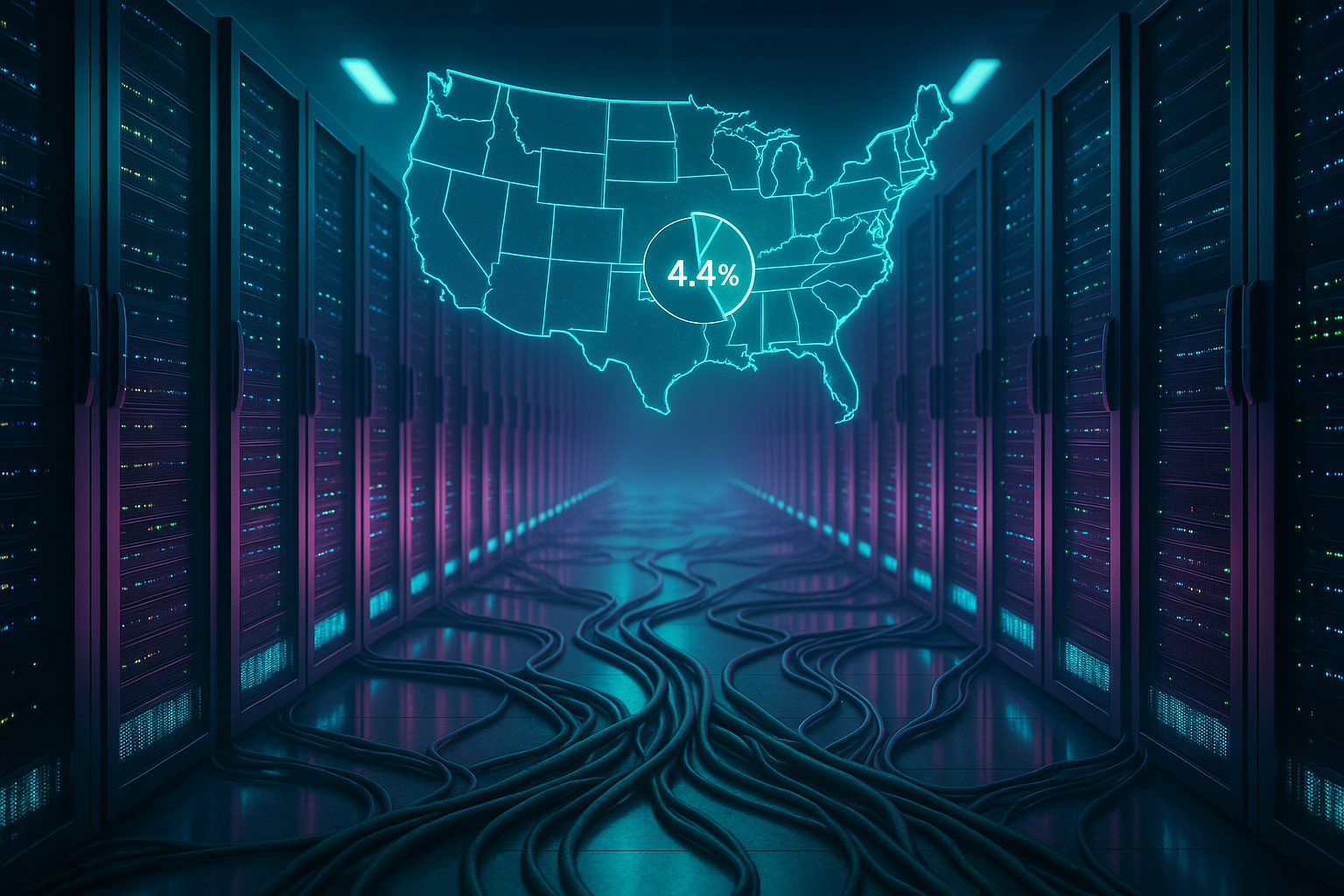No, Coca-Cola’s AI Christmas Ad Did Not Use “Enough Energy to Power Major US Cities for Weeks”
Every time generative AI gets involved in something high-profile, somebody eventually says a version of this:
“That probably used enough energy to power a major city for weeks.”
Coca-Cola’s AI-generated Christmas ad is the latest target for that line. It’s a slick, 60-ish second holiday spot built largely with generative video tools instead of big live-action sets and truck convoys. And yes, there is a serious conversation to have about the energy footprint of AI.
But if we’re going to talk about it, we should actually look at numbers instead of vibes.
This article does exactly that:
- what Coke’s AI workflow likely looked like,
- how much electricity you can reasonably assign to ~70,000 AI-generated clips,
- how that compares to a traditional, big-budget Coca-Cola Christmas shoot, and
- how all of it fits into the larger data-center/AI energy story.
No drama, just math (with a little personality so we both stay awake).

1. What Coca-Cola Actually Did
From the public reporting on the 2025 campaign, the setup looks roughly like this:
- The spot is a reimagined version of the classic “Holidays Are Coming” truck commercial.
- Instead of driving real trucks all over snowy roads, they used generative video models such as:
- OpenAI Sora
- Google Veo 3
- Luma AI (and likely similar tools)
- Around five AI specialists spent roughly one month:
- prompting,
- curating,
- iterating, and
- refining about 70,000 AI-generated video clips.
- The overall team was still large, around 100 people involved if you count:
- strategy and creative,
- brand and legal,
- editing, music, finishing, etc.
So the workflow really is: a relatively small core AI team plus a normal-sized creative/production group, using generative tools instead of fleets of trucks and large film crews.
Now, how much electricity is hiding behind those 70,000 clips?

2. Estimating the Energy for 70,000 AI Clips
We don’t have access to Coca-Cola’s GPU logs, so we can’t say, “This exact many kilowatt-hours.” What we can do is:
- Use realistic ranges for per-generation energy use,
- Make the assumptions explicit, and
- See what happens when you multiply by 70,000.
First, two important anchor points:
- U.S. data centers in total (not just AI) used about
176 TWh (terawatt-hours) of electricity in 2023, roughly 4.4% of all U.S. electricity use. - The average U.S. household uses around 10,500–10,800 kWh per year, or about 30 kWh per day.
For individual AI generations (images or clips), different analyses put the energy per inference anywhere from a few watt-hours (Wh) up into the low hundreds of Wh for heavier workloads. You’re not in megawatt-hour land for a single clip; that’s just not how the scale works.
To keep things simple but conservative, let’s define three scenarios for one generated clip:
- Light case: ~0.005 kWh (5 Wh) per clip
- Medium case: ~0.05 kWh (50 Wh) per clip
- Heavy case: ~0.5 kWh (500 Wh) per clip
That heavy number is deliberately pessimistic, imagine a beefy multi-GPU box running longer per clip than is probably happening in reality. We’re stacking the deck in favor of a high estimate.
Now multiply by 70,000 clips:
- Light:
70,000 × 0.005 kWh ≈ 350 kWh - Medium:
70,000 × 0.05 kWh ≈ 3,500 kWh - Heavy:
70,000 × 0.5 kWh ≈ 35,000 kWh
So across a pretty wide range of assumptions, you end up somewhere between a few hundred and a few tens of thousands of kilowatt-hours.
Now translate that into something human-scale.
2.1. Household Comparison
Average U.S. home: ~30 kWh per day.
Using that:
- Light case (~350 kWh)
≈ about 12 days of one home’s electricity. - Medium case (~3,500 kWh)
≈ around 4 months of one home’s electricity. - Heavy case (~35,000 kWh)
≈ just under 3 years of one home’s electricity.
Even in the deliberately stacked, “heavy” scenario, we’re at the level of a handful of homes over a few years, not anywhere near “major city for weeks” territory.
Now let’s scale up.
2.2. City-Level Comparison
Take a large U.S. city like Seattle as a rough yardstick. Its annual electricity use is on the order of:
- ~9.3 million megawatt-hours (MWh) per year
≈ 9.3 billion kWh per year
Divide by 365 to get daily use:
- 9,300,000,000 kWh / 365 ≈ 25.5 million kWh per day
Now compare our worst-case AI estimate:
- Heavy case for the ad: 35,000 kWh
Compute the fraction of a single day’s electricity for a city at that scale:
35,000 kWh ÷ 25,500,000 kWh ≈ 0.00137 of one day
That’s 0.137% of one day’s electricity, or put another way:
- about two minutes of the city’s daily consumption.
So if you take the grumpiest reasonable estimate for the ad’s AI generation footprint, you’re looking at:
roughly the electricity a large city uses in the time it takes people to microwave lunch and refresh their inbox.
Significant enough to exist on a spreadsheet, yes.
Remotely close to “powering major U.S. cities for weeks,” no.

3. How Does That Compare to a Traditional Coca-Cola Christmas Shoot?
Here’s where the perspective flips.
We actually have pretty solid numbers on the carbon footprint of traditional commercial production, the kind with real sets, real trucks, real flights, and a very real catering budget.
Industry groups and virtual-production companies that cite data from Ad Net Zero, AdGreen, and similar initiatives report that:
- A large, travel-heavy TV commercial can easily land around ~100 metric tons of CO₂.
- Larger, more complex productions, think:
- multiple locations,
- big lighting packages,
- A-list talent,
- international travel can blow past that and land well over 100 tons CO₂ per spot.
To compare these to our kWh numbers, we convert CO₂ back into electricity-equivalent using a rough emissions factor.
Take a representative grid mix of around 0.4 kg CO₂ per kWh of electricity (order-of-magnitude global average):
- 100,000 kg CO₂ ÷ 0.4 ≈ 250,000 kWh
- 200,000 kg CO₂ ÷ 0.4 ≈ 500,000 kWh
So a “normal” high-end TV commercial has a production footprint in the ballpark of:
≈ 250,000–500,000 kWh electricity-equivalent.
Now ask: what does a fully live-action Coca-Cola Christmas truck shoot look like?
Very roughly:
- Multiple night exteriors across:
- mountain roads,
- bridges,
- small towns,
- other winter set-pieces.
- Fleets of branded trucks, not just one hero vehicle.
- Fake snow, set dressing, and potentially entire constructed environments if you’re out of season or shooting somewhere warm.
- Big lighting rigs, cranes, possibly helicopter or heavy-lift drone shots.
- Dozens of crew and cast:
- transport vehicles,
- hotel nights,
- catering,
- freight for gear.
That’s not “one camera, one LED panel, three friends and a hatchback.”
It’s production as logistics operation.
So it’s entirely reasonable to place a full-tilt Coca-Cola Christmas truck shoot in the range of 200–300+ tons CO₂, which translates to something like:
~500,000–750,000 kWh electricity-equivalent.
Even if you argue for a somewhat more efficient shoot, you’re still talking hundreds of thousands of kWh, not thousands.
Compare that to our 35,000 kWh heavy AI scenario:
- 35,000 kWh vs 250,000–500,000+ kWh
You’re looking at at least an order of magnitude difference in energy and emissions between:
- AI-driven production for this ad, and
- a traditional, fully live-action version of the same concept.
Again, AI isn’t suddenly morally pure because of that, but if you’re comparing this specific ad done two different ways, the AI-first version is very likely the lower-energy option on the production side.
4. So Did AI Make This Ad “Green”?
Short answer: not really.
More nuanced answer: it almost certainly reduced the production footprint compared to a traditional shoot, but that’s not the whole story.
Two things can be true at once:
- For a single big campaign, using generative tools instead of real trucks, flights, and giant lighting rigs can significantly cut energy and emissions.
- At system scale, AI workloads are adding serious pressure to the electricity grid, and that’s getting worse.
The Coke ad is just one compute-intensive project sitting on top of a much larger stack of AI usage.
A few key points:
- Those generative models run in data centers that already consume a big share of electricity.
- The training runs for frontier models (Sora, Veo, etc.) are extremely energy-intensive, orders of magnitude larger than a single ad’s inference usage.
- AI is becoming embedded in everything: search, productivity tools, entertainment, you name it. It’s not “one campaign;” it’s millions and then billions of calls.
So yes, the ad probably looks good in a one-to-one comparison against a traditional shoot.
But AI as a whole still raises legitimate climate concerns.
To understand that, you have to zoom out to the data-center level.

5. The Famous “4.4%” Number and What It Actually Refers To
You’ll often see some version of:
“AI data centers used 4.4% of the nation’s energy in 2023.”
That’s not quite right. Here’s the more accurate version:
- All U.S. data centers combined hosting everything from:
- AI workloads,
- cloud services,
- banks,
- government systems,
- streaming platforms,
- boring enterprise IT used about 176 TWh of electricity in 2023, roughly 4.4% of U.S. electricity.
- That’s 4.4% of electricity use, not “4.4% of all energy.”
Total national energy includes:- gasoline and diesel,
- natural gas for heating and industry,
- jet fuel, etc.
- Only a portion of that 4.4% is AI, though that portion is growing quickly.
So the real situation looks more like:
- Data centers overall: ~4.4% of U.S. electricity in 2023, expected to climb.
- AI workloads: a rapidly increasing slice of that 4.4%.
- One Coca-Cola ad: a microscopic dot inside that slice.
Looking ahead, various analyses project that data centers could reach roughly 6.7–12% of U.S. electricity use by 2028, with AI as a major driver of that growth. That’s the scale that matters for policy and climate planning, not whether a single ad used 3,500 vs 35,000 kWh.

6. Where the Climate Conversation Actually Needs to Go
If we care about the environmental impact of AI-driven advertising, and we should, the productive questions are things like:
6.1. How do we make data centers more efficient and more renewable?
- Hardware efficiency: better chips, accelerators, and system design.
- Cooling and layout: optimized airflow, liquid cooling, location selection.
- Workload scheduling: aligning heavy compute with renewable generation (for example, running big jobs when there’s surplus wind or solar).
- Power sourcing: tying large AI clusters to renewable projects instead of fossil-heavy grids.
6.2. How do we reduce wasteful AI usage?
Not “no AI ever,” but:
- Do we really need endless low-effort content and spammy auto-generated media?
- Are we applying AI where it replaces more resource-intensive processes (e.g., flying global crews around), or mostly where it just adds extra compute for marginal benefit?
An AI-generated commercial that replaces a physically intense shoot can be a net win.
An AI-generated commercial that’s just “one more thing” on top of everything else… less so.
6.3. How do we measure ad campaigns end-to-end?
For any big campaign, the right question isn’t just:
“How much GPU time did we buy?”
It’s:
- Travel (flights, vans, trucks, taxis)
- Hotels and catering
- Sets, props, snow machines, generators
- Data-center inference and model training
- Media distribution and post-production
Initiatives like Ad Net Zero, AdGreen, and similar tools are pushing the industry toward full lifecycle measurement, so brands can compare scenarios:
- “All live-action” vs “hybrid” vs “mostly virtual / AI-first”
and choose the one that meets both creative and climate goals.
7. TL;DR: The Data in Plain Language
If you need the short version you can share with someone who doesn’t want to scroll:
- Yes, AI and data centers use a lot of electricity. U.S. data centers consumed about 176 TWh in 2023, around 4.4% of U.S. electricity, and that share is projected to grow, largely due to AI.
- No, Coca-Cola’s AI Christmas ad did not use “enough energy to power major U.S. cities for weeks.”
Even with pessimistic assumptions, 70,000 AI-generated clips likely add up to:- somewhere between hundreds and tens of thousands of kWh, which is:
- days to a few years of one household’s use, or
- a few minutes of a large city’s daily electricity, not weeks.
- somewhere between hundreds and tens of thousands of kWh, which is:
- A traditional big Coca-Cola Christmas truck shoot, real trucks, multiple night locations, fake snow, flights, generators, probably sits in the range of hundreds of thousands of kWh and hundreds of tons of CO₂.
- For this particular ad, using generative AI instead of fully live-action likely reduced the production-phase energy footprint by roughly an order of magnitude.
- The real climate problem isn’t a single holiday campaign; it’s:
- the rapid expansion of AI workloads,
- the overall growth of data centers, and
- the fact that many grids are still heavily fossil-powered.
So the interesting question isn’t, “Did this ad secretly power a city for weeks?”
It’s: “How do we make sure the entire AI + advertising ecosystem is pointed toward lower energy, cleaner grids, and fewer unnecessary compute-burning toys?”